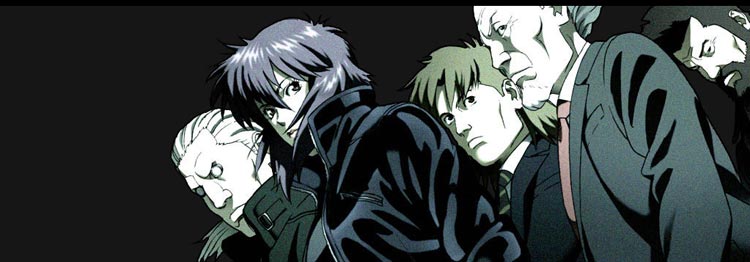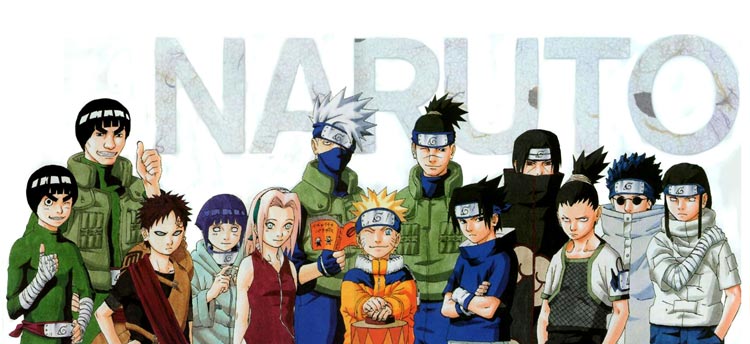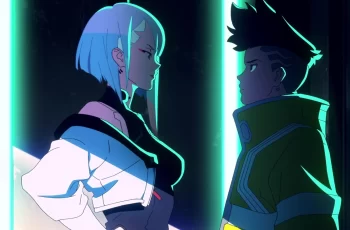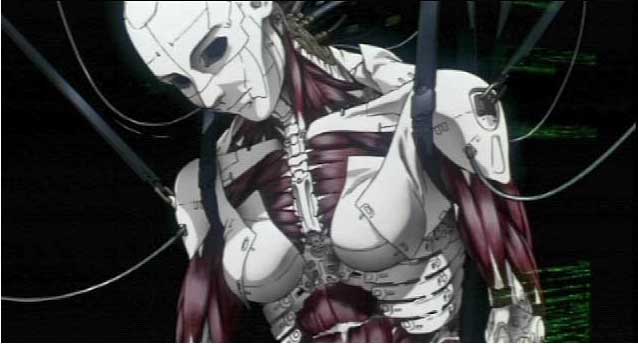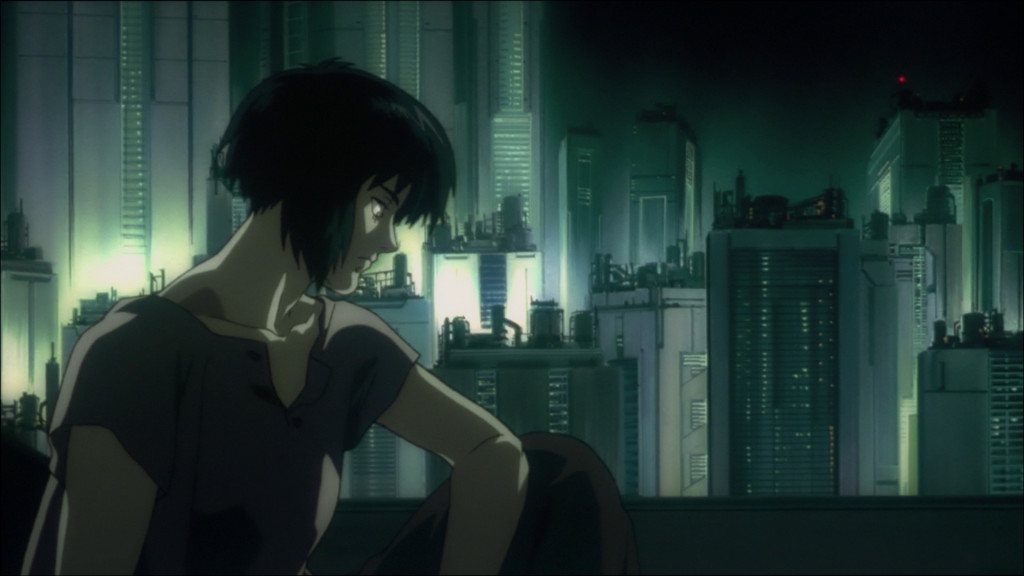 Ghost in the Shell is a popular cyberpunk anime that consistently ranks among the best anime in the history of the genre. The series consists of two separate anime–Ghost in the Shell Standalone Complex and Ghost in the Shell Standalone Complex 2nd Gig — and two movie–Ghost in the Shell and Ghost in the Shell: Innocence. Set in the near future, where humans and machines are one and people the world over are linked via brain implants directly to the Net, the movies and the anime series follow the exploits of Public Security Section 9, an elite cyberwarfare unit headed by Motoko Kusanagi, better known as the Major, as they unravel various intricate criminal and political plots.
Ghost in the Shell is a popular cyberpunk anime that consistently ranks among the best anime in the history of the genre. The series consists of two separate anime–Ghost in the Shell Standalone Complex and Ghost in the Shell Standalone Complex 2nd Gig — and two movie–Ghost in the Shell and Ghost in the Shell: Innocence. Set in the near future, where humans and machines are one and people the world over are linked via brain implants directly to the Net, the movies and the anime series follow the exploits of Public Security Section 9, an elite cyberwarfare unit headed by Motoko Kusanagi, better known as the Major, as they unravel various intricate criminal and political plots.
Any discussion of the most influential anime of all time would certainly be incomplete without mentioning GiTS. Not to mention, it is one of my personal favorite anime, with its blending of sci-fi, police procedural, film noir, and philosophy. An intricate and complex show, with characters who feel human even though most of their bodies aren’t, it is an anime that always reveals something new on subsequent viewings.
However, for this series I decided to limit my attention to the original Ghost in the Shell movie from 1995. There are two reasons for this decision. The first is that it would be a monumental task to GiTS as a whole, one that would have to sprawl over several blog posts to do the show justice, and the second is that I decided to change things up a bit and look not at how GiTS has influenced anime, although it no doubt has, but how it influenced Hollywood.
But now I’m getting ahead of myself. First, lets do a quick review of the film itself. Our first introduction to the GiTS universe features what would become typical of the show–an intricate plot based around high technology, slow build up punctuated by bursts of explosive action, and lots of philosophical musings and political shenanigans. The movie centers around the hunt for the mysterious hacker known as the Puppet Master, a quest that takes the team from back allies to the highest echelons of near-future Japan’s security apparatus, testing them to their limit while simultaneously making them ask themselves what it means to be human. It’s seriously a great show, and I won’t spoil it for those who haven’t seen it.
Besides, the plot itself is not important to today’s discussion. It is the overall feel, themes, and stylistic elements that have had a lasting impact on Hollywood. This is most notable in the 1999 film “The Matrix.” The story goes that the Wachowski brothers, when pitching their idea form The Matrix to producers, handed them a copy of Ghost in the Shell and said “We want to do that for real.”
The thematic and stylistic parallels between the Matrix and Ghost in the Shell are then obvious, in retrospect. Both feature a world where technology dominates the lives of humans. Humans jacking into a large network–the Net or the Matrix–via ports in the back of their necks is also a strong feature in both films. This network dominates the plot of both movies, causing the protagonists to question their humanity, although the two films go in different directions with how they treat the theme. In Ghost in the Shell, the Major wonders if she is still human, if there is a ghost in the cybernetic shell of her body, and ultimately seems to conclude that she is something different, something more, part of a larger whole. While in the Matrix, Neo escapes the Matrix after taking the famous red pill and reasserts his humanity by fighting against the technological tyranny that has driven humans to the center of the Earth in exile.
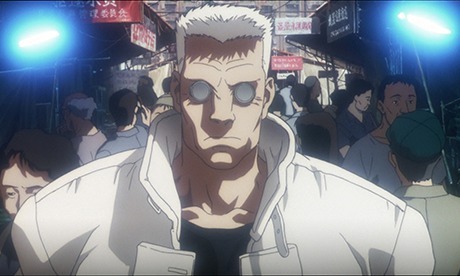
The Wachowski brothers were not the only Hollywood filmmakers impressed and influenced by Ghost in the Shell. James Cameron said of the film: “a stunning work of speculative fiction . . . the first to reach a level of literary excellence”. The biggest move of the last decade, Avatar, was clearly influenced by Ghost in the Shell. While the story does not focus on an all encompassing network, a key to the plot involves the paralyzed Jake Sully projecting himself into one of the titular avatars, a sort of biological machine made to resemble the local native species–the Na’vi. While not a cybernetic organism, the avatars echo the sense of alienation from their bodies that those who underwent cybernetic enhancement in GiTS felt. Mostly an action flick, Avatar still asks the question, although it isn’t explicit, “what does it mean to be human?” Jake Sully in fact seems to become more human when he becomes one of the Na’vi than when he was in his normal human body.
Steven Spielberg as well was influenced by GiTS. His movie A.I.: Artificial Intelligence more closely mimics the philosophical themes of GiTS. More of a brooding meditation than an action flick, the movie questions the implications of human’s relationship to technology. In Minority Report, Spielberg explored what happens when we give our moral reasoning up to a a huge technical apparatus, a sort of Net, something that, while not explicitly explored in GiTS, is certainly in line with the movie’s overall philosophy.
It is clear then that Ghost in the Shell has had a huge influence on pop culture outside of Japan. It influenced two of the biggest action movies of the last twenty years, and from there indirectly changed how American movies are shot.
Technical aspects aside, the thematic and philosophical elements the movie explored were far ahead of their time, and are even more relevant today with the rapid expansion of the internet and smart technology. Perhaps one way to view this is that Ghost in the Shell and The Matrix are two sides of the same coin, or perhaps two alternative paths humanity could travel. Technology could enslave us, as in the Matrix, or we could integrate our humanity with our technology and become part of something greater than ourselves, as in Ghost in the Shell. For as dark and brooding a show as Ghost in the Shell can be, both the movie and the series, there’s an underlying optimism to it that seems to be lacking in Hollywood’s portrayal of future technology. In GiTS, humans adapt to their technology but are not destroyed by it, and can even use it to transcend to something more. Perhaps as Hollywood filmmakers are continually influenced by Ghost in the Shell, this aspect of the movie’s theme will come to the surface, leading to a new, perhaps less fearful portrayal of technology and humanity’s future than what we see today.
Sources:
Rose, S. (2009). Hollywood is haunted by Ghost in the Shell. http://www.theguardian.com/film/2009/oct/19/hollywood-ghost-in-the-shell
Kaplewicz, A. (2010) Psychology and Sociology of Ghost in the Shell. https://wiki.rit.edu/display/05052130220101/Psychology+and+Sociology+of+Ghost+in+the+Shell
